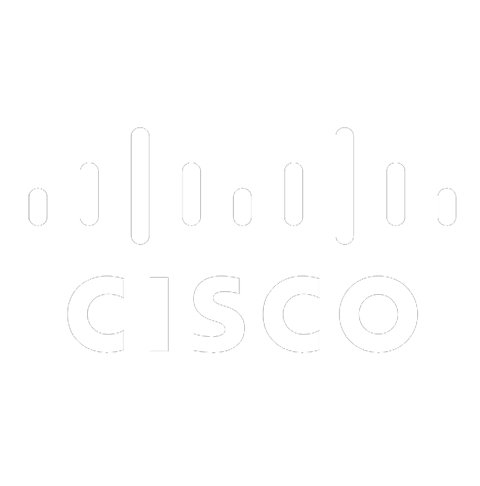
Begin preparing for a networking career with this introduction to how networks operate. This first course in the 3-course CCNA series introduces architectures, models, protocols, and networking elements – functions needed to support the operations and priorities of Fortune 500 companies to small innovative retailers. You’ll even get the chance to build simple local area networks (LANs). Developing a working knowledge of IP addressing schemes, foundational network security, you will be able to perform basic configurations for routers and switches. No prerequisites required. After completing all three CCNA courses, you are ready to take the CCNA Certification.
Null
Chapter1: Networking Today
Lesson1: Networks Affect Our Lives
Lesson2: Network Components
Lesson3: Network Representations and Topologies
Lesson4: Common Types of Networks
Lesson5: Internet Connections
Lesson6: Reliable Networks
Lesson7: Network Trends
Lesson8: Network Security
Chapter 2: Basic Switch and End Device Configuration
Lesson1: Cisco IOS Access
Lesson2: IOS Navigation
Lesson3: The Command Structure
Lesson4: Basic Device Configuration
Lesson5: Save Configurations
Lesson6: Ports and Addresses
Lesson7: Configure IP Addressing
Lesson8: Verify Connectivity
Chapter 3: Protocols and Models
Lesson1: The Rules
Lesson2: Protocols
Lesson3: Protocol Suites
Lesson4: Standards Organizations
Lesson5: Reference Models
Lesson6: Data Encapsulation
Lesson7: Data Access
Chapter 4: Physical Layer
Lesson1: Purpose of the Physical Layer
Lesson2: Physical Layer Characteristics
Lesson3: Copper Cabling
Lesson4: UTP Cabling
Lesson5: Fiber-Optic Cabling
Lesson6: Wireless Media
Chapter 5: Number Systems
Lesson1: Binary Number System
Lesson2: Hexadecimal Number System Chapter 6: Data Link Layer
Lesson1: Purpose of the Data Link Layer
Lesson2: Topologies
Lesson3: Data Link Frame
Chapter 7: Ethernet Switching
Lesson1: Ethernet Frames
Lesson2: Ethernet MAC Address
Lesson3: The MAC Address Table
Lesson4: Switch Speeds and Forwarding Methods Chapter 8: Network Layer
Lesson1: Network Layer Characteristics
Lesson2: IPv4 Packet
Lesson3: IPv6 Packets
Lesson4: How a Host Routes
Lesson5: Introduction to Routing
Chapter 9: Address Resolution
Lesson1: MAC and IP
Lesson2: ARP
Lesson3: Copper Cabling
Chapter 10: Basic Router Configuration
Lesson1: Configure Initial Router Settings
Lesson2: Configure Interfaces
Lesson3: Configure the Default Gateway Chapter 11: IPv4 Addressing
Lesson1: IPv4 Address Structure
Lesson2: IPv4 Unicast, Broadcast, and Multicast
Lesson3: Types of IPv4 Addresses Lesson4: Network Segmentation
Lesson5: Subnet an IPv4 Network
Lesson6: Subnet a Slash 16 and a Slash 8 Prefix
Lesson7: Subnet to Meet Requirements
Lesson8: VLSM
Lesson9: Structured Design
Chapter 12: IPv6 Addressing
Lesson1: IPv4 Issues
Lesson2: IPv6 Address Representation
Lesson3: IPv6 Address Types
Lesson4: GUA and LLA Static Configuration
Lesson5: Dynamic Addressing for IPv6 GUAs
Lesson6: Dynamic Addressing for IPv6 LLAs
Lesson7: IPv6 Multicast Addresses
Lesson8: Subnet an IPv6 Network
Chapter 13: ICMP
Lesson1: ICMP Messages
Lesson2: Ping and Traceroute Tests
Chapter 14: Transport Layer
Lesson1: Transportation of Data
Lesson2: TCP Overview
Lesson3: UDP Overview
Lesson4: Port Numbers
Lesson5: TCP Communication Process
Lesson6: Reliability and Flow Control
Lesson7: UDP Communication
Chapter 15: Application Layer
Lesson1: Application, Presentation, and Session
Lesson2: Peer-to-Peer
Lesson3: Web and Email Protocols
Lesson4: IP Addressing Services
Lesson5: File Sharing Services
Chapter 16: Network Security Fundamentals
Lesson1: Security Threats and Vulnerabilities
Lesson2: Network Attacks
Lesson3: Network Attack Mitigations
Lesson4: Device Security
Chapter 17: Build a Small Network
Lesson1: Devices in a Small Network
Lesson2: Small Network Applications and Protocols
Lesson3: Scale to Larger Networks
Lesson4: Verify Connectivity
Lesson5: Host and IOS Commands
Lesson6: Troubleshooting Methodologies
Lesson7: Troubleshooting Scenarios
Lesson8: Troubleshooting Scenarios
Null
Null